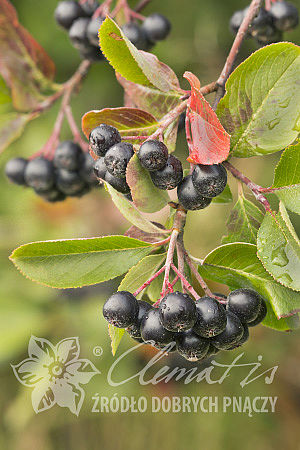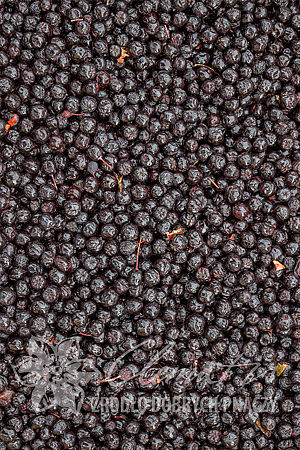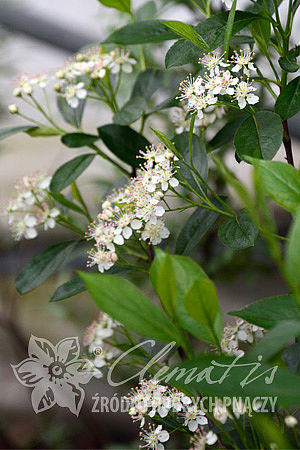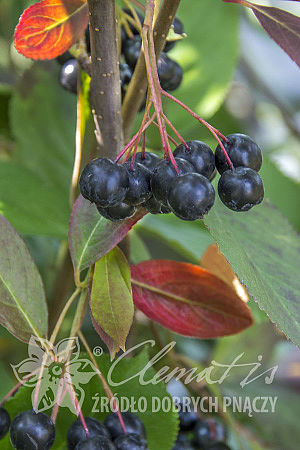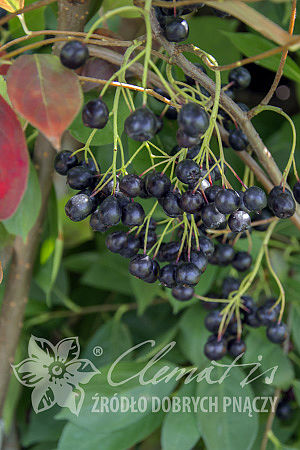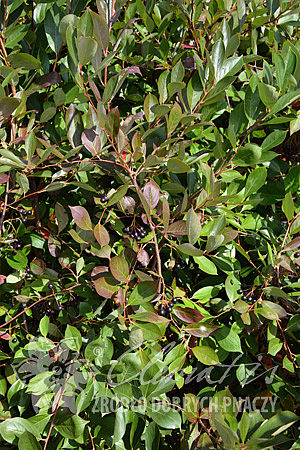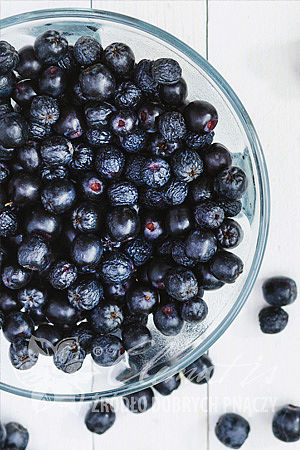Aronia melanocarpa ‘Hugin’
Black Chokeberry ‘Hugin’| 装饰形式 | leaves which turn red in autumn, edible fruits |
|---|---|
| 花色 | white |
| 花期 | IV |
| 年生长量 | 0.5-0 m |
| 种植方位 | sun, 3/4 sun, 1/2 sun |
| 耐寒区 | Zones 5 - 7 |
| 1m2的密度 | 1 |
| 常绿植物 | no |
A resistant and tolerant fruit shrub of high ornamental value. The cultivar yields large black fruits with a waxy coating, gathered in clusters. In autumn the leaves turn red. Recommended for house gardens and plantations.
WHAT IT LOOKS LIKE: Berries edible, round, 0.6-1 cm across, black with waxy coating, gathered in clusters. Ripen at the beginning of September. When left on the bush, they’re a decorative feature and a source of food for birds. Decorative flowers, white and pleasantly scented, appear in May. Leaves decorative, dark green and glossy in vegetation season, in autumn turn red.
HOW IT GROWS: Shrub of an upright habit the shape of an upside-down cone. The cultivar is more compact than the average of the species. Fast-growing, reaches 1.5 m height. Annual growth rate 0.3-0.5 m.
WHERE TO PLANT: Yields fruit best when planted in a sunny site and in well-drained soil of neutral or slightly acidic pH, but it’s a tolerant plant. Does not require acidifying of the soil, as opposed to highbush blueberry. A healthy cultivar, unsusceptible to diseases and pest. Fully frost hardy (zone 5-7).
HOW TO PLANT AND MAINTAIN: Before planting immerse the plant container in water for 10-30 min. Place the root ball in a 40 x 40 x 40 cm hole with a 10 cm layer of well-rotten manure or compost, 0.5-1 cm deeper than it was before. Fill the hole with fertile soil. On plantations, the required plant spread is 0.5-0.7 x 4m for mechanical harvesting purpose. Does not require regular pruning. When the bushes thicken after a couple of years, a thinning may be necessary. Excessive pruning limits the fruition.
HOW TO APPLY: The shrub recommended for amateur cultivation in house gardens as well as for plantations (also organic ones). Suitable also for landscape shaping as a hedge and for erosion control or as a field border – the berries are a source of food for many birds. The fruits are rich in vitamins (vitamin C especially), minerals and anti-oxidants. They are used for juice, syrup, jam and tincture production.
ORIGIN: Sweden.

